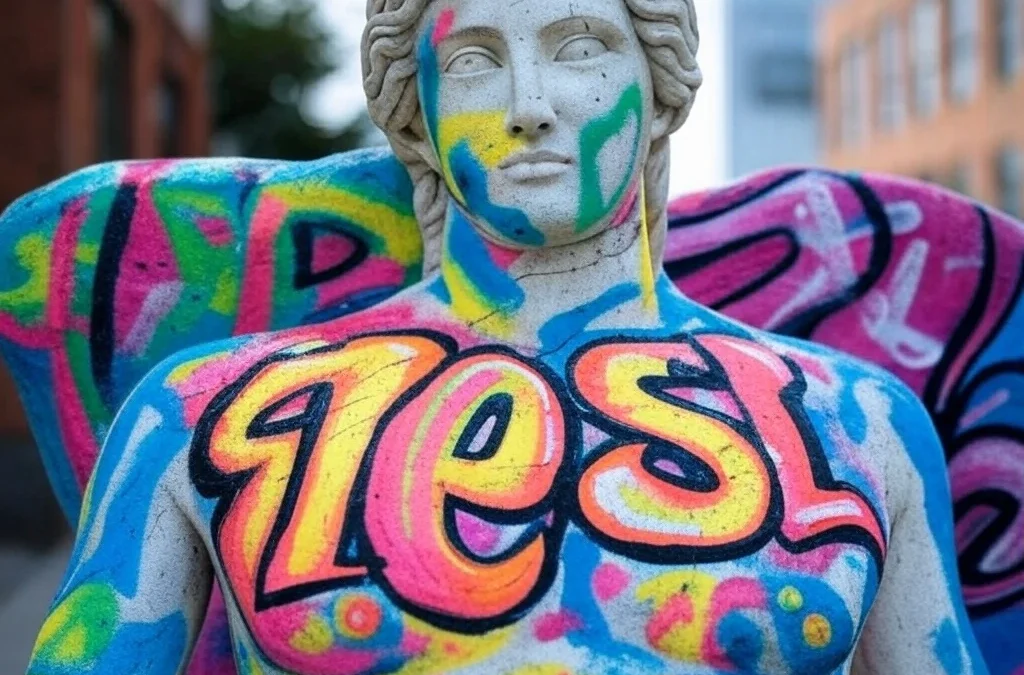Imagine opening a neatly organized drawer, only to find it in disarray a few weeks later without anyone intentionally messing it up. This is a simple example of entropy at work, a concept that describes how things naturally move towards disorder. Entropy is a fundamental idea in physics, but it also pops up in everyday life, often in ways we don’t even notice. From the way ice melts to how our rooms get messy, entropy is all around us, shaping the world in subtle but significant ways.
In this article, we’ll explore 20 examples of entropy that you can relate to. Understanding these examples will not only give you a clearer picture of what entropy means but also show you how it affects everything from the smallest particles to the largest systems. Whether it’s the gradual cooling of a hot cup of coffee or the way old buildings crumble over time, entropy is a powerful force that influences our lives more than we might think. Let’s take a closer look at these everyday instances where entropy is at play.
What is Entropy?
Entropy is a fundamental concept in both physics and information theory that describes the level of disorder or randomness in a system. In thermodynamics, entropy is a measure of the amount of energy in a physical system that is not available to do work. It is a central concept in the second law of thermodynamics, which states that the total entropy of an isolated system can never decrease over time. This law explains why certain processes, such as the mixing of substances or the flow of heat from hot to cold, are irreversible.
In a more intuitive sense, entropy can be thought of as a measure of uncertainty or unpredictability. For example, a neat and orderly room has low entropy, while a messy room has high entropy because there are more ways for the objects to be arranged in a disordered manner.
In information theory, entropy quantifies the amount of information or uncertainty involved in predicting the value of a random variable. Introduced by Claude Shannon, this form of entropy helps in understanding data compression and transmission. It measures the average amount of information produced by a stochastic source of data.
Overall, entropy is a versatile concept that applies to various fields, reflecting the tendency of systems to progress towards disorder or equilibrium and providing a quantitative measure of uncertainty or information content. Understanding entropy is essential for grasping the natural progression of systems towards equilibrium in physics and the limits of data predictability in information theory.
The Best Examples of Entropy
Entropy surrounds us, driving systems from order to chaos in fascinating ways. From melting ice cubes to the gradual disorganization of a tidy room, these examples of entropy help illustrate how the natural world leans toward disorder. Below, we’ve compiled 20 relatable instances that bring the concept of entropy to life in everyday scenarios.
1. Ice Melting
Imagine you have an ice cube sitting on a warm kitchen counter. Over time, the ice cube melts into water. This process is an example of entropy. The structured, solid form of the ice becomes less ordered as it turns into liquid water. The molecules in ice are tightly packed in a regular pattern, but when they melt, they move more freely and randomly. This increase in disorder is a clear demonstration of entropy at work.
2. Mixing Salt and Pepper
Consider a bowl of salt and a bowl of pepper. If you mix them together, the grains become randomly distributed throughout the mixture. Initially, the two substances are separate and ordered, but mixing them increases the disorder. This is another example of entropy, where the system moves from a state of order to a more disordered state.
3. Burning Wood
When you burn wood, it transforms into ash, smoke, and gases. Initially, the wood is in a structured form, with its molecules arranged in a specific way. Burning breaks these structures down, releasing energy and increasing the randomness of the molecules. The resulting ash and gases are far more disordered than the original wood, illustrating entropy.
4. Dissolving Sugar in Coffee
Think about stirring sugar into a cup of coffee. Initially, the sugar is separate from the coffee, but as it dissolves, the sugar molecules disperse throughout the liquid. This process increases the disorder of the system, as the sugar molecules move from a concentrated, ordered state to a more random distribution, demonstrating entropy.
5. Spreading Ink in Water
Drop a small amount of ink into a glass of water, and you’ll see it slowly spread and mix. Initially, the ink is concentrated in one spot, but over time, it disperses evenly throughout the water. This transition from an ordered to a disordered state is an example of entropy. The ink molecules become more randomly distributed as they mix with the water.
6. Room Tidiness
Think of a tidy room where everything is in its place. Over time, without effort, it tends to become messy. Objects get misplaced, and the room becomes disordered. This natural tendency towards disorder, unless energy is spent to maintain order, reflects the concept of entropy in everyday life.
7. Gas Expansion
Imagine a balloon filled with gas. If you pop the balloon, the gas quickly spreads out into the surrounding air. Initially, the gas molecules are confined and ordered within the balloon. Once released, they disperse and move more randomly, increasing the disorder of the system. This expansion demonstrates entropy.
8. Rusting Iron
When iron is exposed to oxygen and moisture, it rusts. This chemical reaction transforms the structured metal into a flaky, reddish-brown substance. The well-ordered arrangement of iron atoms becomes more disordered as rust forms. This increase in disorder is a classic example of entropy in a chemical process.
9. Heat Transfer
Consider a hot cup of coffee left on a table. Over time, it cools down as heat transfers to the surrounding air. The heat energy spreads out, moving from a concentrated state within the coffee to a more dispersed state in the room. This natural spread of energy, leading to greater disorder, is a manifestation of entropy.
10. Biological Decay
When living organisms die, their bodies begin to decompose. The complex structures that make up the living body break down into simpler substances. This transition from a highly ordered state to a more disordered one is a biological example of entropy. The breakdown of organic matter increases the randomness and disorder within the system.
11. Breaking a Glass
Imagine dropping a glass on the floor. It shatters into countless tiny pieces. Initially, the glass had a well-defined, orderly structure. Once broken, it becomes a chaotic collection of fragments scattered across the floor. This transformation from order to disorder is a vivid illustration of entropy.
12. Paper Shredding
Think about feeding a sheet of paper into a shredder. The paper starts as a single, coherent piece with organized text or images. After shredding, it turns into a pile of jumbled strips. The information becomes disorganized, highlighting an increase in entropy as the paper’s structure is destroyed.
13. Cloud Formation
Consider how clouds form in the sky. Water vapor, initially dispersed in the air, condenses into tiny droplets to form clouds. Though the cloud appears as a distinct shape, the process involves a significant increase in entropy as water molecules transition from a gaseous, dispersed state to a more chaotic liquid formation within the cloud.
14. Sandcastle Destruction
Building a sandcastle on the beach is an exercise in creating order. However, over time, the wind and waves erode this structure, reducing it to an unrecognizable pile of sand. The structured form of the sandcastle becomes disordered, with the grains scattered by natural forces, exemplifying the concept of entropy.
15. Fruit Ripening
As fruit ripens, it undergoes chemical changes that increase its sweetness and alter its texture. Initially firm and structured, the fruit becomes softer and more disordered as its cells break down. This natural process of ripening involves an increase in entropy as the fruit transitions from an organized to a more chaotic state.
16. Mountain Erosion
Over millions of years, mountains slowly erode due to wind, water, and other natural elements. The solid, towering structure of a mountain gradually breaks down into smaller rocks and sediment. This long-term process reflects an increase in entropy as the mountain loses its ordered form and becomes more disordered over time.
17. Food Spoilage
When food spoils, its molecules break down, leading to a loss of structure and an increase in disorder. Fresh food, with its organized cellular structure, becomes a breeding ground for bacteria and fungi. As these microorganisms consume the food, they break it down into simpler, more chaotic components, demonstrating entropy in action.
18. Disordered Filing System
Imagine a well-organized filing system in an office. Over time, if not maintained, files may become misplaced or mixed up. The initial order of the system deteriorates into a state of confusion and disorder. This natural progression towards chaos without intervention is a clear example of entropy at work in an organizational context.
19. Melting Candle Wax
When a candle burns, its solid wax melts and drips down the sides. The wax, initially in a structured, solid form, turns into a liquid that flows and spreads. This transition from a well-defined shape to a more random distribution of wax is a simple yet effective demonstration of entropy.
20. Decay of Ancient Ruins
Consider ancient ruins left to the elements over centuries. Initially, these structures were built with precision and order. As time progresses, they crumble and erode, losing their original form. The gradual decay and increase in disorder reflect the inevitable rise of entropy in historical architecture.
The Role of Entropy in the Universe
Entropy shapes the universe on a grand scale, influencing everything from the birth of stars to the ultimate fate of existence. Scientists believe the universe began in a state of extremely low entropy – a highly ordered state – during the Big Bang. Over billions of years, the cosmos has been moving toward higher entropy, as energy and matter spread out across vast distances.
Take stars, for example. They form when clouds of gas and dust collapse under gravity, creating an ordered system. But as stars burn their fuel, they release heat and light, dispersing energy and increasing entropy. Eventually, they exhaust their fuel, becoming white dwarfs, neutron stars, or even black holes. These endpoints are far more disordered than the star’s initial form, showcasing entropy at work over cosmic timescales.
Black holes, too, are deeply connected to entropy. Physicist Stephen Hawking showed that black holes have an entropy proportional to their surface area. This concept links gravity, quantum mechanics, and thermodynamics in one of the most fascinating intersections of modern physics.
At the universe’s largest scale, entropy predicts a long-term trend: the “heat death” of the universe. Over trillions of years, stars will fade, galaxies will scatter, and the cosmos will approach a state of maximum entropy – a featureless expanse where no useful energy remains. Thinking about entropy on such a vast scale helps us understand the irreversible nature of time and the forces that shape existence itself.
Entropy in Philosophy
Entropy isn’t just about physics; it’s a profound concept with deep philosophical significance. At its core, entropy mirrors the inevitability of change, the passage of time, and the transient nature of existence. It speaks to the human condition—our efforts to create order in a world that constantly shifts toward chaos.
Take the ancient Greek idea of panta rhei, meaning “everything flows.” Attributed to the philosopher Heraclitus, it captures the essence of change. He famously said, “No man ever steps in the same river twice.” The river flows, constantly changing, just as life does. This idea aligns with entropy: systems naturally move and evolve, never staying in a fixed state. It’s a reminder that nothing is permanent, no matter how much we might wish it to be.
In everyday life, this is easy to see. We tidy our homes, but clutter always returns. We plan carefully, only for unexpected events to disrupt our routines. It’s part of being human. This ongoing effort to manage disorder isn’t just a chore – it’s how we engage with the world. Without it, life would be static and unchanging. The presence of entropy fuels creativity, growth, and adaptation.
Entropy also challenges us to think about purpose. If everything trends toward disorder, what do our efforts mean? For some, this thought feels overwhelming. For others, it’s a reason to value the moments we can bring order or beauty into the world. The fact that nothing lasts forever gives those moments greater significance.
Philosophical traditions across cultures echo this. Buddhism teaches the impermanence of all things, encouraging acceptance of change. Existentialist thinkers explore the struggle to create meaning in a universe that moves toward chaos. Even the simple act of maintaining a garden – knowing weeds will return—becomes a meditation on life’s temporary victories over entropy.
Seen this way, entropy isn’t just a law of nature. It’s a lens through which we can understand the challenges and beauty of existence. Change is inevitable, but within it lies the opportunity to act, create, and find meaning.
Understanding the Arrow of Time
The concept of time’s arrow is a fascinating way to think about the directionality of time. At its core, it describes the one-way direction or asymmetry of time. We perceive time moving from the past to the future, and this is closely tied to the idea of entropy. In a nutshell, the arrow of time is a reflection of the second law of thermodynamics, which tells us that entropy tends to increase over time in an isolated system.
Think about a broken cup. If you drop a cup and it shatters into pieces, it’s easy to see that the entropy of the system has increased. The pieces are more disordered than the intact cup. You wouldn’t expect those pieces to spontaneously come back together into a whole cup. This irreversibility is what gives time its arrow-like quality.
The arrow of time also has implications for how we experience the world. It affects everything from how we remember events to how we predict the future. Our memories are built on a sequence of events that have already happened, not on things that have yet to occur. This sequence aligns with the increase in entropy and the natural progression of time.
In everyday life, the arrow of time is evident in countless ways. Ice melting, coffee cooling, and even the aging process are all manifestations of this concept. Each of these processes involves a transition from a state of lower entropy to higher entropy, affirming the direction of time as we perceive it.
Understanding Entropy in Thermodynamics
Entropy is a fundamental concept in the field of thermodynamics, which is a branch of physics concerned with heat and temperature and their relation to energy and work. In thermodynamics, entropy is a measure of the disorder or randomness in a system. The second law of thermodynamics states that in any natural process, the total entropy of a closed system will either increase or remain constant; it never decreases. This implies that energy transformations are never 100% efficient, as some energy is always dispersed as waste heat, increasing the entropy of the universe.
The concept of entropy helps explain why certain processes occur spontaneously. For example, heat naturally flows from a hot object to a cold one, not the other way around. This is because such a transfer increases the overall entropy of the system, aligning with the second law. Entropy also provides insight into the direction of chemical reactions, as reactions tend to proceed in the direction that increases the disorder of the system.
Entropy in Information Theory
In information theory, entropy is a measure of the uncertainty or unpredictability of information content. Introduced by Claude Shannon in 1948, entropy quantifies the amount of uncertainty involved in predicting the value of a random variable. This concept is crucial in the field of data compression and transmission, as it helps determine the best way to encode information efficiently.
The entropy of a message or data source is calculated based on the probability distribution of its possible outcomes. A higher entropy indicates more unpredictability and more information content, while a lower entropy suggests less uncertainty and redundancy. For example, a perfectly predictable source has zero entropy because there is no uncertainty about what it will produce. On the other hand, a source with a random sequence of bits has high entropy due to its unpredictability.
In practical applications, understanding entropy in information theory can lead to more efficient data compression algorithms, which reduce the amount of space needed to store or transmit data without losing information. This is critical in today’s world where efficient communication over networks is essential. By minimizing redundancy and maximizing entropy, data can be compressed to its theoretical limits, optimizing storage and bandwidth usage.
Entropy and the Arrow of Time
Entropy is closely tied to the concept of time’s arrow. In physics, entropy explains why time seems to move in one direction – from past to future. As entropy increases, systems naturally evolve towards disorder. This progression from order to disorder is what gives time its forward motion.
Think about a cup of hot coffee left on a table. Over time, it cools down, never spontaneously reheating itself. This is entropy in action, driving the process forward. It’s a phenomenon observed in countless natural processes. However, it also raises intriguing questions about the universe. If entropy dictates the flow of time, could there be scenarios where time behaves differently?
Read also: Serendipity: 20 Examples & Definition
The Most Popular on BitGlint

30 Defiance Examples & Meaning
Defiance is something most people experience at some point in life. You feel it when you say no to something that...

30 Cynicism Examples in Everyday Life & Definition
Cynicism is something most people have seen, heard, or even felt - but few stop to really think about what it means....

30 Ethical Dilemma Examples & Definition
Ethical dilemmas are not just topics for classrooms or philosophers. They happen to regular people every day - in...

100 Social Interaction Examples
In our increasingly digital world, the art of face-to-face social interaction remains essential for personal growth,...

100 Open-Ended Questions: Examples & Meaning
Open-ended questions are questions that invite explanation, opinion, or personal stories. Unlike yes-or-no questions,...

30 Regret Examples & What It Means
Regret is a common human emotion that almost everyone experiences at some point in their lives. It shapes our...

30 Transgression Examples & Definition
We all know what it feels like when someone “crosses the line.” Maybe they say something they shouldn't. Maybe they...
Get Inspired with BitGlint
The Latest
Hermaphroditus (Greek Mythology)
In Greek mythology, Hermaphroditus was born as the son of Hermes, the messenger god, and Aphrodite, the goddess of love and beauty. His name combines those of his parents—Hermes and Aphrodite. As the child of two Olympian deities, Hermaphroditus was extraordinarily...

30 Obedience Examples & What It Really Means
Obedience is a part of everyday life, whether we notice it or not. From following traffic laws to listening to a parent or teacher, we all experience it in one way or another. But what does obedience really mean? Why do people obey — and when should they? In this...
50 Things That Are Smart
We all know someone who seems naturally clever. Maybe they pick up new skills quickly or always have the right answer. Being smart isn't just about book smarts or having a high IQ. It shows up in many forms - from problem-solving and adapting to new situations to...
Top 30 Symbolic Archetypes Examples & Their Meaning
Symbolic archetypes are the building blocks of storytelling, weaving deep significance and universal themes into narratives. This article delves into 30 of the most influential archetypes, unraveling their meanings and the pivotal roles they play across various...

